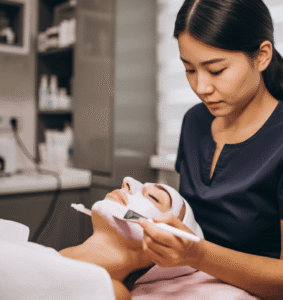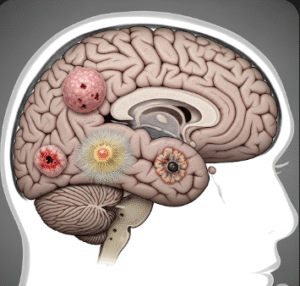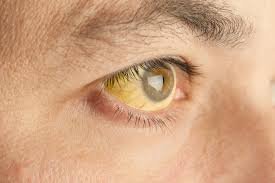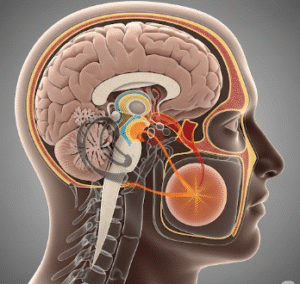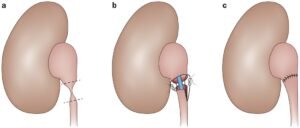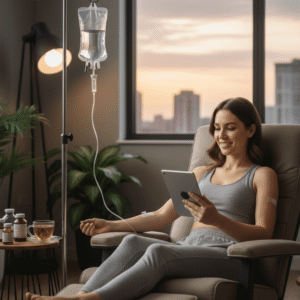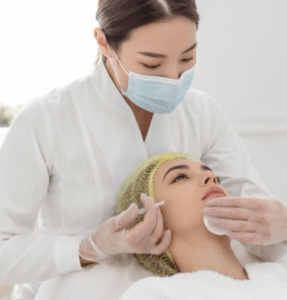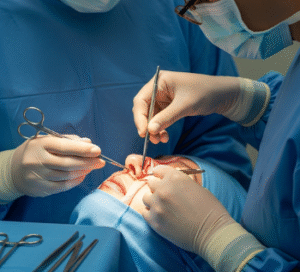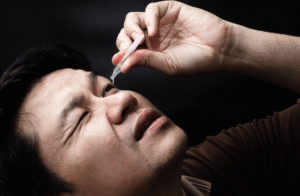What it is
➝ Negative-pressure wound therapy (NPWT), also called vacuum-assisted closure (VAC), is a wound management technique that uses controlled suction applied to a sealed wound dressing.
➝ The system consists of a foam or gauze dressing placed inside the wound, covered with an adhesive drape, and connected to a vacuum pump that applies continuous or intermittent negative pressure.
➝ This therapy removes excess fluid, reduces edema, improves circulation, and stimulates granulation tissue formation, making it highly effective for chronic, infected, or complex wounds.
➝ In Korea, NPWT is widely used in surgical, diabetic, and reconstructive wound care centers, both in hospitals and outpatient clinics.
Why it’s done
→ To accelerate wound healing in chronic ulcers (diabetic foot ulcers, pressure sores, venous ulcers).
→ To prepare wounds for skin grafting or flap surgery.
→ To manage post-surgical wounds with complications such as dehiscence or infection.
→ To reduce infection risk by removing exudates and improving oxygenation.
→ In Korea, NPWT is commonly applied in diabetic clinics, burn centers, and plastic surgery units to improve healing outcomes.
Alternatives
→ Conventional wound dressings (gauze, hydrocolloids, foams).
→ Moist wound healing dressings (hydrogels, alginates, silicone dressings).
→ Hyperbaric oxygen therapy in selected refractory wounds.
→ Surgical options such as debridement, flap coverage, or grafting.
→ Biologic dressings or growth factor therapy.
Preparation
→ Assess wound type, size, depth, and presence of infection.
→ Perform thorough wound debridement to remove necrotic tissue before starting NPWT.
→ Ensure hemostasis; NPWT should not be used on actively bleeding wounds.
→ Clean and dry periwound skin to allow proper drape sealing.
→ In Korea, hospitals often use specialized wound care teams (dermatology, plastic surgery, nursing) to assess NPWT suitability.
How it’s Done
→ A foam or gauze dressing is cut to fit the wound bed.
→ The dressing is sealed with an adhesive drape to create an airtight environment.
→ A suction tube connects the dressing to the NPWT pump.
→ Negative pressure (usually -75 to -125 mmHg) is applied, either continuously or intermittently.
→ Dressings are typically changed every 48–72 hours, more frequently if infection is present.
→ Therapy continues until adequate granulation tissue forms or the wound is ready for closure.
Recovery
→ Patients often see reduced wound size and depth within 2–4 weeks.
→ Pain and exudate levels decrease, improving comfort and quality of life.
→ Many chronic wounds heal significantly faster compared to conventional dressing methods.
→ NPWT can reduce hospital stay duration and improve outcomes in surgical recovery.
Complications
→ Bleeding risk in patients with vascular disease or anticoagulant use.
→ Skin irritation from adhesive drapes.
→ Infection if dressings are not changed regularly.
→ Discomfort from suction, especially if pressure is too high.
→ With proper monitoring, NPWT is generally safe and effective.
Treatment Options in Korea
→ NPWT is widely available in university hospitals, wound care clinics, and diabetic foot centers.
→ Korean clinics use both portable NPWT devices for home care and hospital-based machines for inpatient treatment.
→ Insurance coverage in Korea supports NPWT for approved wound types, making it accessible for chronic wound patients.
→ Wound care teams in Korea often combine NPWT with antibiotic therapy, surgical debridement, and nutritional support.
→ Patients receive structured education on device use, hygiene, and follow-up schedules.
→ With Korea’s advanced wound care infrastructure, NPWT is considered a gold standard therapy for complex wounds, offering improved healing rates, fewer infections, and better surgical outcomes.



